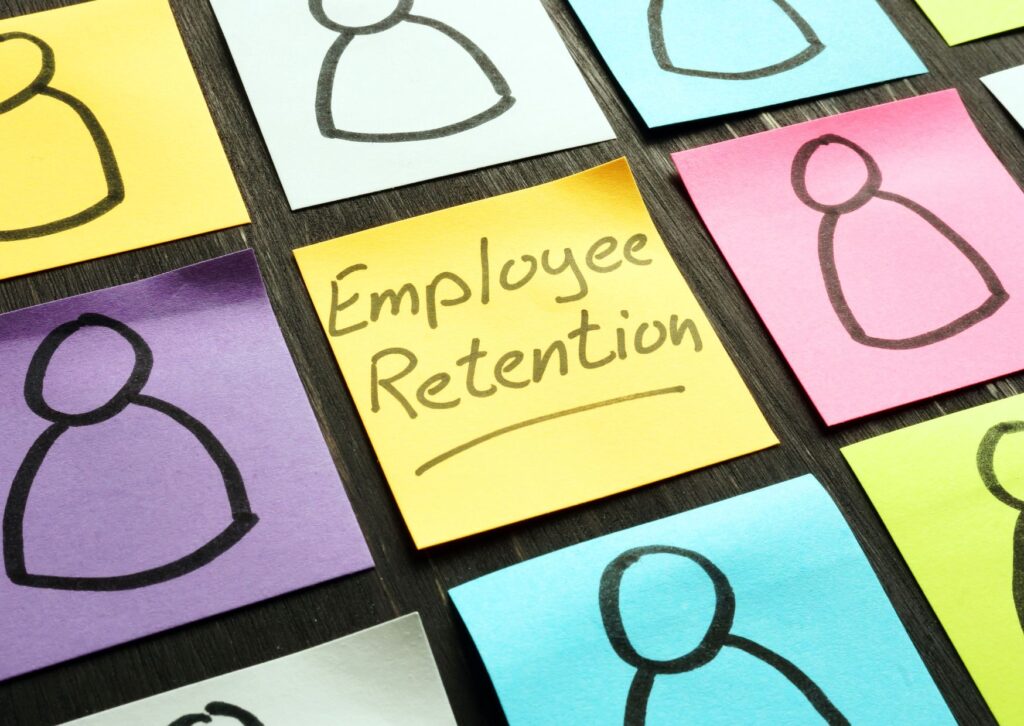10 Strategies to Promote Rest and Recovery in the Workplace
Rest and recovery at work is an essential element for a thriving and productive work environment.
Fatigued and overworked employees are more likely to get sick, take time off work, and be less productive.
In our always-connected world, the lines between work and rest often blur, making it even more vital to intentionally carve out time for rejuvenation.
This blog will explore the significance of rest, its range of benefits, and actionable strategies to foster a culture where rest and recovery is not frowned upon in the workplace.
We’ll also address potential challenges and provide tools to support these initiatives.
Contents
Why is Rest and Recovery Important at Work?
The Benefits of Rest and Recovery at Work
10 Strategies to Promote Rest and Recovery at Work
Challenges Implementing Rest and Recovery Strategies
Tools and Resources for Employee Rest and Recovery
Why is Rest and Recovery Important at Work?
In the busy modern workplace, it’s easy to overlook the significance of rest and recovery.
However, their importance cannot be overstated.
Here’s why:
Mental Rejuvenation
Continuous work can cloud our judgment, making it harder to think clearly and make informed decisions.
Rest acts as a reset button, clearing the fog and allowing for sharper, more focused thinking.

Physical Wellbeing
Our bodies aren’t machines.
Prolonged periods of work without adequate breaks can lead to physical strain and health issues.
Regular rest ensures our bodies don’t wear out, reducing the risk of work-related ailments.
Emotional Balance
Constant work, especially under tight deadlines, can be a significant stressor.
Taking time to rest helps regulate emotions, preventing feelings of overwhelm and exhaustion.
Enhanced Creativity
A well-rested mind is a creative mind.
Downtime often sparks innovation, allowing us to approach problems from fresh, unique angles.

Prevention of Burnout
Without proper rest, employees are at a higher risk of burnout. This is a state of chronic physical and emotional exhaustion.
This not only affects individual wellbeing but can also lead to decreased productivity and increased absenteeism.
Improved Learning and Memory
Rest, especially sleep, plays a crucial role in memory consolidation.
It helps in processing and storing new knowledge, making it easier to recall and apply in the future.
In essence, rest and recovery are foundational to a sustainable work environment.
They ensure that employees remain at their optimal, physically, mentally, and emotionally.
This contributes to both individual wellbeing and company success.

The Benefits of Rest and Recovery at Work
The advantages of prioritising rest and recovery in the workplace extend beyond just the individual.
They ripple out, benefiting teams, departments, and the organisation as a whole.
Of course, work still needs to get done, but resting when necessary has its benefits.
Here’s why:
Boosted Productivity
It might seem counterintuitive, but taking breaks can actually increase overall productivity.
A rested mind is more alert, focused, and efficient, allowing tasks to be completed more quickly and with fewer errors.

Enhanced Creativity and Innovation
When the mind is relaxed, it’s more open to new ideas and perspectives.
This can lead to innovative solutions to problems and fresh approaches to tasks.
Improved Employee Morale
A workplace that values rest and recovery contributes to higher job satisfaction.
Employees feel valued and cared for, leading to a more positive work environment.
Reduced Absenteeism
Overworked employees are more prone to illnesses and burnout.
By promoting rest, companies can reduce the number of sick days taken and ensure a more consistent workforce.
Better Decision Making
A well-rested mind can assess situations more clearly, leading to more informed and rational decisions.
This is especially crucial for those in leadership roles.

Strengthened Team Dynamics
When employees are well-rested, they’re less likely to experience mood swings or irritability.
This can lead to better communication, fewer conflicts, and a more harmonious team dynamic.
Long-term Employee Retention
Companies that prioritise the wellbeing of their employees, including ensuring they get adequate rest, are more likely to retain talent.
Employees are more loyal to organisations that care about their health and wellbeing.

10 Strategies to Promote Rest and Recovery at Work
Promoting rest and recovery in the workplace is not just about taking breaks.
It’s about creating an environment where employees feel rejuvenated and at their best.
Here are some effective strategies to achieve this:
1. Flexible Work Hours
The traditional 9-to-5 workday doesn’t cater to everyone’s natural lifestyle.
By offering flexible work hours, companies can empower employees to work during their most productive and energetic times.
This not only leads to increased efficiency but also ensures that employees can rest during their natural downtime.
When individuals can align their work schedules with their body’s internal clock, they experience better sleep quality, reduced fatigue, and enhanced overall wellbeing.

2. Offer Wellbeing Programs
A company’s commitment to its employees’ wellbeing can be showcased through the wellbeing programs it offers.
These programs can range from wellbeing workshops that educate staff on the importance of mental health, stress management, and self-care, to wellbeing webinars tailored for remote employees.
For on-site staff, the inclusion of services like employee chair massages can be a revitalising experience.
A short massage session can alleviate physical tension, reduce stress, and boost mood.
By offering such programs, companies not only promote rest and recovery but also foster a culture of care and support.

3. Encourage Regular Breaks
The human brain isn’t designed for prolonged periods of intense focus.
In fact, studies have shown that taking regular short breaks can significantly boost concentration and performance.
Encouraging employees to take breaks every hour or so can prevent cognitive fatigue and mental burnout.
These breaks don’t need to be long.
A simple 5-minute walk, a quick stretch, or even a moment of mindfulness can do wonders.
By stepping away from their workstations, employees can refresh their minds, improve blood circulation, and reduce the strain on their eyes.
Over time, this practice can lead to increased productivity, better mental clarity, and a more positive attitude towards work.

4. Create Quiet Zones
The modern workplace, especially open-plan offices, can often be a hub of activity and noise.
While collaboration and communication are essential, there are times when employees need a quiet space to focus or simply unwind.
Quiet zones, or dedicated relaxation areas, can provide this sanctuary.
These zones, free from the usual office chatter and phone rings, can be places where employees meditate, read, or engage in deep work.
Equipped with comfortable seating, soft lighting, and perhaps some calming background can be a haven for those seeking a brief respite from the hustle and bustle.
Over time, employees will come to value these spaces as areas where they can recharge and regain their focus.

5. Promote Physical Activity
A sedentary lifestyle, common in many office settings, can take a toll on both physical and mental health.
Encouraging physical activity can counteract these effects.
Companies can introduce initiatives like walking meetings, where discussions take place during a walk outside.
Not only does this promote movement, but the change of scenery can also spark creativity.
Organising regular office workouts or yoga sessions can also be beneficial.
These activities not only improve physical health but also serve as a break from the routine, helping employees feel more energised and alert.
Check out our blog on “10 ways to Improve Employee Physical Health”

6. Provide Training on Time Management
One of the reasons employees might skip breaks or work overtime is the feeling of being overwhelmed with tasks.
By providing training on effective time management and prioritisation techniques, companies can equip their staff with the tools to handle their workload more efficiently.
When employees can manage their time better, they’re less likely to feel stressed, leading to better rest and recovery.
Workshops on topics like the “Pomodoro Technique” or “Eisenhower Box” can introduce employees to proven strategies that enhance productivity while ensuring adequate rest.

7. Introduce Mental Health Days
Mental wellbeing is as crucial as physical health.
Recognising this, some progressive companies have started offering mental health days.
These are days off specifically meant for mental rest and recuperation.
These aren’t sick days but are days when an employee feels they need a break to avoid burnout or stress.
By introducing such a policy, companies send a clear message: they value the mental wellbeing of their staff.
These days can be used for relaxation, pursuing a hobby, or simply catching up on sleep.
Over time, this can lead to a more balanced, happier, and more productive workforce.

8. Implement a “Right to Disconnect” Policy
In our digital age, the boundaries between work and personal time can often blur, especially with the rise of remote work.
Employees might feel obligated to respond to work emails or messages during their off-hours, leading to a feeling of being “always on.”
A “Right to Disconnect” policy establishes clear boundaries.
It ensures that employees aren’t expected to engage in work-related activities outside of their designated work hours.
By implementing such a policy, companies show respect for their employees’ personal time, allowing them genuine rest and recovery.
This not only boosts morale but also ensures that when employees are working, they’re truly present and engaged.

9. Foster a Culture of Open Communication
The importance of open communication in promoting rest and recovery cannot be overstated.
Employees should feel comfortable discussing their workloads, expressing if they’re feeling overwhelmed, or suggesting changes that might improve their work-life balance.
Regular check-ins or feedback sessions can provide a platform for these discussions.
When employees know that their wellbeing is a priority and that their voices are heard, they’re more likely to take proactive steps towards self-care.
Moreover, insights from these conversations can guide management in making structural changes that promote a healthier work environment for everyone.

10. Establish “No Meeting” Zones in the Schedule
Meetings, while essential for collaboration and decision-making, can sometimes dominate an employee’s day, leaving little time for focused, uninterrupted work.
This constant shift between tasks and meetings can be mentally exhausting.
By establishing specific “No Meeting” zones in the work schedule, companies can ensure that employees have dedicated blocks of time for deep work.
These could be specific hours in the day or even full days like “No Meeting Fridays.”
During these periods, employees can dive deep into tasks, brainstorm, or simply use the time for professional development without the interruption of back-to-back meetings.
Over time, this can lead to improved job satisfaction, better work quality, and a genuine sense of accomplishment.
This all contributes to better rest and recovery.

Challenges Implementing Rest and Recovery Strategies
While the benefits of promoting rest and recovery in the workplace are clear, implementing these strategies isn’t without its challenges.
Recognising these hurdles is the first step towards addressing and overcoming them.
Here are some common challenges faced by organisations:
Resistance to Change
Humans are creatures of habit.
Introducing new policies or practices, even if they’re beneficial, can meet with resistance.
Employees might be sceptical of new initiatives, or managers might be wary of changes they perceive as disrupting the workflow.
Perceived Loss of Productivity
There’s a deeply ingrained belief in many work cultures that more hours equal more productivity.
Overcoming this mindset and convincing stakeholders that rest can actually boost productivity is a significant challenge.

Logistical Issues
Implementing strategies like flexible work hours or quiet zones might pose logistical challenges, especially in workplaces with limited resources or space.
Finding solutions that cater to everyone’s needs can be complex.
Fear of Missing Out (FOMO)
In fast-paced work environments, employees might fear that taking breaks or availing mental health days might make them appear less committed or result in them missing out on important updates.
Lack of Awareness
Not all employees or managers might be aware of the importance of rest and recovery.
Educating them about the benefits, both for individual wellbeing and organisational success, is crucial.

Inconsistent Implementation
For any strategy to be effective, it needs to be consistently implemented across the board.
However, inconsistencies, like certain departments not respecting the “Right to Disconnect” policy, can undermine the entire initiative.
Balancing Individual Needs
Every individual is different.
What works as a rest and recovery strategy for one might not work for another.
Striking a balance and catering to diverse needs can be challenging.
Recognising these challenges is crucial.
Only by addressing them head-on can organisations successfully create a culture that truly values and promotes rest and recovery.
Tools and Resources for Employee Rest and Recovery
Incorporating rest and recovery into the workplace is made easier with the right tools and resources.
These can range from digital apps to physical amenities.
Here’s a list of tools and resources that can aid in promoting employee wellbeing:
Meditation and Mindfulness Apps
Apps like Headspace, Calm, and Insight Timer offer guided meditations, sleep stories, and mindfulness exercises.
These can be invaluable for employees looking to take short relaxation breaks during the day or improve their sleep quality.

Ergonomic Office Furniture
Physical comfort plays a significant role in rest and recovery.
Ergonomic chairs, standing desks, and keyboard/mouse setups can reduce physical strain, ensuring employees remain comfortable throughout the day.
Digital Detox Tools
Apps like Freedom or StayFocusd can block distracting websites or apps, allowing employees to focus on tasks and reduce digital fatigue.
Online Wellbeing Workshops
Platforms like Udemy or Coursera offer courses on topics ranging from stress management to yoga.
Companies can provide employees with access to such courses, promoting continuous learning and wellbeing.
At Loving Life, we deliver virtual wellbeing workshops to support employee wellbeing for a thriving workplace.

Physical Activity Apps
Apps like 7 Minute Workout or MyFitnessPal can encourage employees to incorporate physical activity into their daily routine.
Whether it’s short exercise breaks or tracking their nutrition.
Nature Sound Machines
Background sounds of nature, like flowing water or chirping birds, can be soothing.
Devices or apps that play these sounds can create a calming ambiance, aiding in relaxation and focus.
Virtual Therapy Platforms
Platforms like Talkspace or BetterHelp connect users with licensed therapists.
Offering subscriptions to such services can be a valuable resource for employees seeking mental health support.

Flexible Work Management Tools
Tools like Trello, Asana, or Slack can help manage flexible work schedules, ensuring clear communication and task management, especially for remote teams.
Rest and Break Reminder Software
Software like Time Out or Stretchly can remind employees to take regular breaks, ensuring they don’t get too engrossed in work and overlook the importance of rest.
Books and Reading Materials
Providing a library of books on topics like mindfulness, time management, and mental wellbeing can be a valuable resource for employees looking to delve deeper into these areas.
By providing access to these tools and resources, companies can actively support their employees in their rest and recovery journey.
This helps to foster a culture of wellbeing and resilience.

Rest and recovery are an important part of every employee’s working week.
Companies that prioritise supporting this are set for a loyal, productive and thriving workforce.
At Loving Life, we deliver a range of Employee Wellbeing Services to help support the health and wellbeing of employees.
For more information, get in touch!
Author
Tyler Lowe – Health & Wellbeing Speaker
BSc Sport & Exercise Rehabilitation


